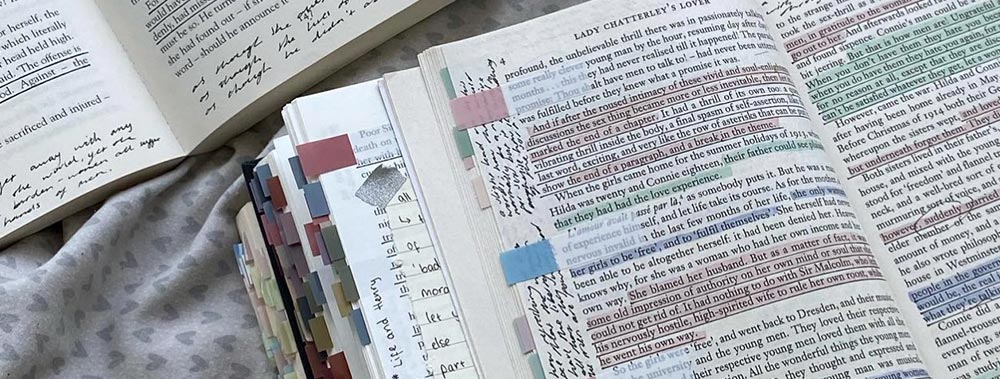Just Mercy: Summary, Plot, Characters, Literary Analysis & More
“Just Mercy” is a compelling non-fiction work by Bryan Stevenson, first published in 2014. This book stands as one of Stevenson’s greatest critical and popular successes.
“Just Mercy” delves into Stevenson’s journey as a young lawyer and his founding of the Equal Justice Initiative, dedicated to reforming the criminal justice system.
It centers on Stevenson’s tireless advocacy for death row prisoners, particularly Walter McMillian, the first death row prisoner he represented.
Stevenson’s emotionally profound account unveils systemic racial bias, wrongful convictions, and the dire consequences of a flawed legal system. This true story exposes the farthest reaches of injustice within the United States judicial system.

Stevenson's emotionally profound account unveils systemic racial bias, wrongful convictions, and the dire consequences of a flawed legal system.
Table of Contents
Summary The Plot Characters Key Themes Genres Language used Literary devices Summing upThe Plot
“Just Mercy” narrates Bryan Stevenson’s relentless fight for justice in the face of systemic injustices. The book details his legal battles, including Walter McMillian’s case, a wrongfully condemned man sentenced to death.
Stevenson’s pursuit takes him to the Supreme Court, where he challenges the death penalty and advocates for criminal justice reform.
Through his legal practice dedicated to condemned prisoners and mentally ill inmates, Stevenson exposes the flaws in the legal system, shedding light on racial bias and wrongful convictions.
This powerful narrative highlights the urgent need for reform within the criminal justice system and the quest for equal justice.
Characters
Characters in “Just Mercy” play pivotal roles in highlighting the injustices within the criminal justice system.
They represent the condemned prisoners, mentally ill individuals, and victims of racial bias, shedding light on the urgent need for criminal justice reform.
Bryan Stevenson
As a young lawyer and activist, Stevenson’s work with the Equal Justice Initiative drives the narrative, exposing the flaws in the legal system and advocating for criminal justice reform.
Walter McMillian
A death row prisoner wrongly convicted, McMillian’s case serves as a focal point, illustrating the devastating consequences of a flawed legal system and the death penalty.
Key Themes
Themes in “Just Mercy” revolve around justice, inequality, and advocacy.
It explores the pursuit of equal justice within the criminal justice system, the impact of racial bias, and the importance of criminal justice reform in addressing issues like wrongful convictions and the death penalty.
Criminal Justice Reform
The book underscores the dire need to reform the criminal justice system, highlighting its flaws and the urgent necessity for change.
Racial Bias
“Just Mercy” exposes the deep-rooted racial bias within the legal system, emphasizing the disproportionate impact on African Americans.
Human Rights
The narrative delves into the fundamental human rights of the condemned prisoners and the emotionally profound stories of those affected by a flawed system.
Genres in Just Mercy
“Just Mercy” encompasses various genres, blending elements of memoir, legal drama, and social justice literature.
It seamlessly weaves Bryan Stevenson’s personal experiences as a lawyer with gripping legal battles, offering an emotionally profound narrative that sheds light on the flaws within the criminal justice system and the urgent need for reform.
Memoir
The book draws on Stevenson’s personal journey as a young lawyer and activist, making it a compelling memoir that chronicles his work with the Equal Justice Initiative and his dedication to advocating for the wrongfully condemned.
Legal Drama
Through Stevenson’s representation of death row prisoners and mentally ill inmates, “Just Mercy” reads like a legal thriller, immersing readers in the complexities of the cases and courtroom battles while emphasizing the flaws in the legal system.
Social Justice Literature
As a work of social justice literature, the book exposes systemic racial bias, wrongful convictions, and the consequences of a flawed legal system, urging readers to consider the profound social and ethical issues at its core.
Language used in Just Mercy
In “Just Mercy,” the author employs a compelling and emotionally charged writing style. Through vivid descriptions and powerful language, he creates an atmosphere of urgency and empathy.
The narrative delves deep into the injustices of mass incarceration, using language that evokes a sense of outrage and compassion.
Stevenson’s words paint a stark picture of the human toll of a flawed system, compelling readers to confront the harsh realities of wrongful convictions, racial bias, and the profound emotional impact on those ensnared in the web of mass incarceration.
Literary devices in Just Mercy
The author skillfully employs various literary devices to enhance the narrative.
Through vivid storytelling and Stevenson’s recollection of events, the book utilizes flashbacks and anecdotal accounts to provide context, engaging readers emotionally.
Additionally, the murder of Ronda Morrison serves as a pivotal moment, functioning as a powerful symbol and catalyst for the exploration of systemic issues within the criminal justice system.
These devices not only captivate the audience but also deepen their understanding of the book’s themes and the gravity of its subject matter.
Similes
Similes in “Just Mercy” serve to vividly compare elements and evoke reader engagement. For instance, when Stevenson recounts his experiences, his storytelling is as gripping as a suspenseful novel, drawing readers into the narrative with the same intensity as a captivating page-turner.
These similes enhance understanding by making the emotional and factual content more relatable and engrossing.
Metaphors
Metaphors within the book, such as “Justice Forever” and “Nobel Peace Prize laureate,” symbolize the enduring pursuit of justice and the significant impact of individuals like Stevenson in striving for change.
They convey deeper meanings, emphasizing the timeless importance of justice and the recognition of those who champion it, such as Stevenson and the Southern Prisoners Defense Committee. These metaphors underscore the book’s overarching themes of social justice and advocacy.
Analogies
Analogies in “Just Mercy” are essential in simplifying complex concepts. For instance, comparing the legal system to a labyrinth helps readers understand its intricate and often confusing nature.
Analogies like this make the intricacies of capital punishment, the struggles of law students, and the plight of mentally ill prisoners more relatable, allowing readers to grasp these multifaceted issues with greater clarity.
Imagery
Vivid imagery is skillfully employed to craft sensory experiences for readers. The book paints a poignant picture of a notorious murder, conveying the grim reality and emotional weight of the crime.
It also transports readers back to the heart of the civil rights movement, evoking the era’s intensity and significance.
Through these powerful images, the book effectively illustrates the consequences of retribution replacing justice, allowing readers to viscerally feel the impact of such a profound societal shift.
Symbolism
“Just Mercy” employs powerful symbolism, with elements such as the law student representing the pursuit of justice by the younger generation.
The central theme emerges in the symbolism of “when revenge and retribution replace justice and mercy,” highlighting the book’s core message.
The struggles and successes of Bryan Stevenson and his clients symbolize the ongoing battle for equal justice, making these elements integral to conveying the larger themes of reform, mercy, and the inherent flaws within the criminal justice system.
Personification
Personification in “Just Mercy” brings depth to the characters and setting. For instance, the portrayal of a “white woman” and the description of being “wrongly condemned” personifies the collective experiences of individuals caught in a flawed system, making them relatable and empathetic figures.
The book’s deliberate use of personification helps readers connect emotionally with the character’s struggles and the harsh setting of the criminal justice system.
Hyperbole
Hyperbole in the book serves to emphasize the gravity of the situation. For example, the “case drew Bryan,” highlights the extraordinary nature of the legal battles undertaken by Stevenson.
The notion of “unusual punishment” employs hyperbole to underscore the extreme injustices faced by the condemned prisoners, underscoring the urgency for reform in the narrative.
Irony
Irony in “Just Mercy” takes on various forms, including situational irony when individuals are wrongly condemned to life imprisonment despite evidence of their innocence.
The juxtaposition of a civilized country like the United States with the Jim Crow-era injustices serves as dramatic irony, underscoring the stark contrast between ideals and reality.
This irony throughout the book highlights systemic flaws and underscores the need for criminal justice reform.
Juxtaposition
Juxtaposition is effectively used in the book to contrast the harsh realities of mental illness in the criminal justice system with the idealized notion of a civilized country.
The stark contrast between life imprisonment and the Jim Crow era highlights the ongoing struggle for justice and equality.
These thought-provoking scenarios created through juxtaposition compel readers to reflect on the stark disparities within the system and the urgent need for reform.
Paradox
Paradoxes in “Just Mercy” are evident in the concept of “life sentences” for children, which represents a seemingly contradictory notion within the criminal justice system.
This paradox underscores the harsh realities faced by young offenders, highlighting the injustice of condemning them to a lifetime behind bars and emphasizing the need for reform.
Allusion
Allusions in the book may reference historical events or figures related to juvenile offenders, but specific examples aren’t provided.
However, the mention of “Publishers Weekly” alludes to the book’s critical acclaim and the impact of Stevenson’s work, serving as a modern reference within the context of the narrative.
The role of an “executive director” alludes to the leadership within organizations like the Equal Justice Initiative, where Stevenson played a significant role. These allusions emphasize the real-world significance of the book’s events and characters.
Onomatopoeia
In “Just Mercy,” onomatopoeic words are sparingly used to enhance auditory dimensions. For instance, the clinking of prison bars or the slamming of courtroom doors is subtly evoked, immersing readers in the book’s atmosphere.
While not a dominant feature, these onomatopoeic elements contribute to the sensory experience of the narrative.
Repetition
Repetition in the book serves to underscore its themes and emotional impact. Phrases like “great nation” and “powerful story” are reiterated, emphasizing the juxtaposition of a supposedly great nation with the struggles of poor people and black men.
This repetition drives home the stark realities of systemic injustice, amplifying the book’s emotional resonance and calls for change.
The Use of Dialogue
In “Just Mercy,” dialogue serves as a potent tool to convey character traits, themes, and narrative tension. Through conversations between Bryan Stevenson and various characters, readers gain insight into their motivations, values, and struggles.
The dialogue also underscores the overarching themes of systemic injustice and the relentless pursuit of justice, adding depth and authenticity to the narrative.
Parallelism
Parallelism in “Just Mercy” can be found in the repeated structure of Stevenson’s legal battles, where he consistently confronts political machinations and systemic injustices within Alabama’s criminal justice system.
This structural parallelism highlights the cyclical nature of the issues he addresses, emphasizing the enduring struggle for justice.
Rhetorical Devices
The book employs rhetorical devices, such as rhetorical questions and parallelism, to persuasive effect.
Stevenson often poses thought-provoking questions about the treatment of a black man in Alabama’s criminal justice system.
This creates a compelling narrative that challenges readers to reflect on the profound injustices faced by those living without parole and the significance of an activist lawyer’s work in combating systemic flaws.
Just Mercy: FAQs
In this section of the “Just Mercy” summary, we address common questions relating to the book’s themes, content, and the author’s work in the realm of criminal justice reform.
Explore these answers to gain a deeper understanding of this impactful narrative.
How is the criminal justice system described in “Just Mercy”?
In “Just Mercy,” the criminal justice system is depicted as deeply flawed, marred by racial bias, wrongful convictions, and the excessive use of the death penalty. It highlights the urgent need for reform and equal justice.
What are the main points of “Just Mercy”?
The main points of “Just Mercy” revolve around Bryan Stevenson’s journey as an activist lawyer, his advocacy for death row prisoners, and his fight against systemic injustices within the criminal justice system.
What happens at the end of the book “Just Mercy”?
At the end of “Just Mercy,” Bryan Stevenson and his team achieve significant legal victories, securing the release of several wrongfully condemned individuals. The book concludes with a message of hope and the ongoing struggle for justice.
What is the main idea of broken from “Just Mercy”?
The main idea of “Broken,” a chapter in “Just Mercy,” underscores how the criminal justice system disproportionately affects the mentally ill, subjecting them to harsh punishments rather than providing appropriate care and treatment.
What is the purpose of mentioning deatch row in the book?
Mentioning death row in the book serves to illustrate the gravity of the cases Bryan Stevenson handles and the extreme consequences individuals face. It highlights the urgency of reforming the death penalty and the inherent flaws in the system.
Summing up: Just Mercy: Summary, Plot & More
As you now know fom this “Just Mercy” summary, this work is a powerful testament to the relentless pursuit of justice within the American criminal justice system.
Stevenson’s journey as an activist lawyer, dedicated to combating systemic injustices, takes us from the deep south of Alabama to the bustling streets of New York.
Through Stevenson’s shared experiences, we witness the harrowing tales of children trapped in the clutches of a flawed legal system, underscoring the urgent need for reform.
This book not only highlights the profound injustices faced by countless individuals but also serves as a call to action. It urges us all to confront the deep-seated issues of racial bias, wrongful convictions, and the consequences of a punitive approach to justice.
“Just Mercy” reminds us that, even in the face of seemingly insurmountable challenges, one dedicated activist lawyer can ignite change and bring hope to those who have been marginalized and oppressed.
Other Notable Works by Bryan Stevenson
If you are interested in “Just Mercy”, you may be interested in other works by Bryan Stevenson including:
- “Mercy, Mercy Me”: The Art, Loves and Demons of Marvin Gaye”: A book that explores the life and music of Marvin Gaye while also discussing themes related to justice and civil rights, connecting the legacy of the legendary artist with contemporary issues.
- “True Justice”: A Screening and Discussion Guide”: A companion guide to the documentary film “True Justice: Bryan Stevenson’s Fight for Equality,” which provides additional insights into Stevenson’s work and the pursuit of justice.
These works provide a deeper understanding of Bryan Stevenson’s dedication to justice, his advocacy efforts, and the broader social issues he addresses.







